#george pershing
Explore tagged Tumblr posts
Text
Ahmad Jamal's Timeless Brilliance: Exploring the Legacy of "At the Pershing: But Not for Me"
Introduction: In the annals of jazz history, certain albums stand out as defining moments that transcend their time of creation. “At the Pershing: But Not for Me,” released in 1958, is undoubtedly one such gem. Pianist Ahmad Jamal, accompanied by bassist Israel Crosby and drummer Vernell Fournier, crafted a masterpiece that not only marked a pivotal point in Jamal’s career but also left an…
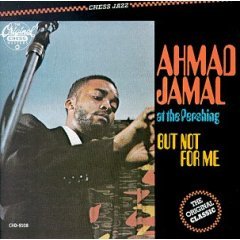
View On WordPress
#Ahmad Jamal#At the Pershing: But Not for Me#Buddy Bernier#Classic Albums#Dizzy Gillespie#George Gershwin#Ira Gershwin#Israel Crosby#Jazz History#Miles Davis#Nat Simon#Vernel Fournier
3 notes
·
View notes
Text
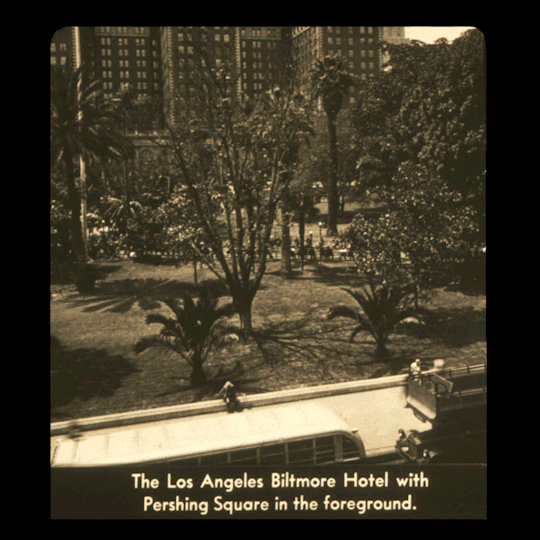
Caption: The Los Angeles Biltmore Hotel with Pershing Square in the foreground.
Brand: Tru-Vue Filmstrip Title: Los Angeles 1 Filmstrip Subtitle/Type: Los Angeles, California, Series One Filmstrip Number: 513 Image Number: 3 Date: 1939
#tru-vue#513 tru-vue#tru-vue los angeles#los angeles#california#george brookwell#biltmore hotel#pershing square
7 notes
·
View notes
Photo
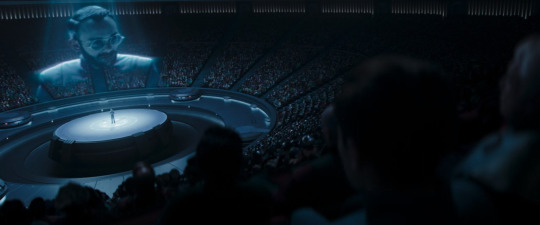


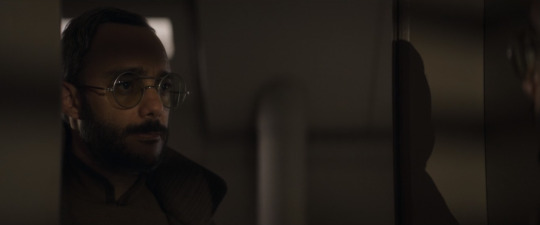
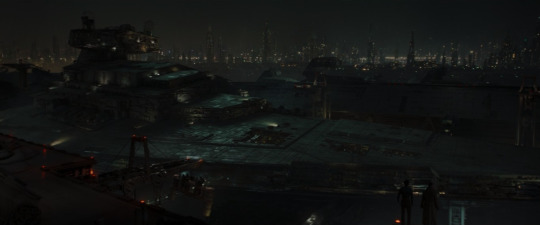
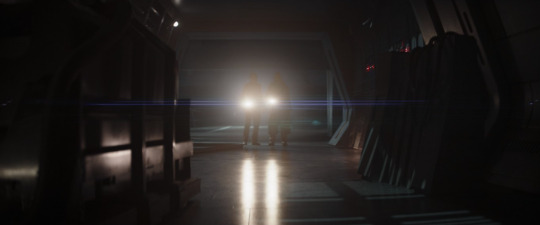
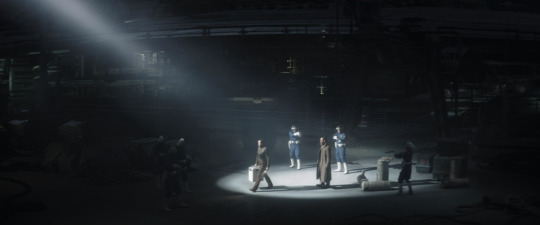

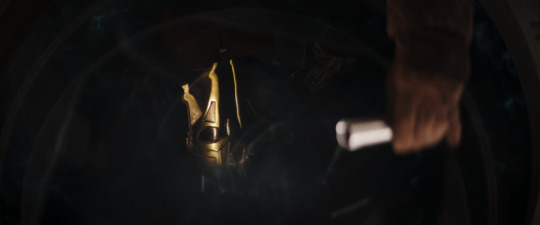
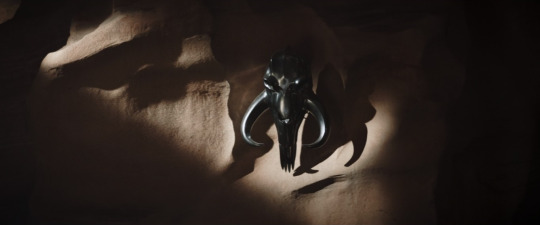
**Shots of the Episode**
The Mandalorian (2019)
Season 3, Episode 3: “Chapter 19: The Convert” (2023) Director: Lee Isaac Chung Cinematographer: Dean Cundey
#shots of the episode#the mandalorian#the mandalorian season 3#mando s3#mando spoilers#the mandalorion spoilers#lee isaac chung#dean cundey#jon favreau#george lucas#star wars#coruscant#omid abtahi#katy o'brian#dr. pershing#elia kane#screencaps#screenshots#stills#cinematography#2023 tv#2023#2.35:1#sci fi#star wars universe#the convert#disney#lucasfilm#disney+#streaming
16 notes
·
View notes
Text

Henry ‘Chips’ Channon: The Diaries (vol. 1), 1918-38, entry for Thursday, 16th May 1918
It is dreadful my life, dreadful yet wonderful to skim the cream off life … gliding along oceans of delight when the world is mourning and is suffering. In the world drenched with misery, is one drop of happiness a sin? Electric waves of depression seem to sweep over Paris. The theatres are all open and the streets and restaurants are crowded. The giant balloons placed in conspicuous places have restored confidence, the idea being that the wires suspended from them impede the progress of the Boche planes. Really they are probably useless, but as a matter of fact there has not been a successful read for three weeks. The people in the know believe the English forces and possibly the French will fall back, that the Ypres salient will be abandoned and that they will take back Amiens or Arras. Then the tide will turn and it will be the Allied hour backed by the Americans to victory …¹ Chaponay² is more cheerful since the duc de Lévis-Mirepoix³ has been acquitted. He is supposed to have left letters written by the Queen Mother of Spain⁴ in a taxicab wrapped in a pair of stays. There are vague rumours that they were left in the house of a well-known actress playing at the Capucines. He was court-martialled, in spite of the opposition of Foch and Clemenceau,⁵ (the ‘Tiger’⁶ ever delighted to persecute an aristocrat) and was freed from blame. The Lévis-Mirepoix are most arrogant and they claim descent from Levi⁷ — and always refer to the Virgin Mary as ‘notre cousine’. The tact of the usually tactless Prince de Beauvau⁸ in not getting into this scrape at Madrid is much commented on. Table-turning⁹ this evening predicted the fall of Clemenceau. Of course the monde¹⁰ hat him and are most Clemenceauphobe,¹¹ although they have no candidate to suggest. I am like them, anti-Pershing,¹² anti-Clemenceau, for no reason unless it is type-antipathy.
Which is remarkably similar to what happened.
Marquis Antoine Marie François de Chaponay-Morancé (1893-1956). In 1923 he would marry Geneviève d’Orléans (1901-83), Princess de France, daughter of the 8th duc de Vendôme.
Antoine Pierre Marie François Joseph de Lévis-Mirepoix (1884-1981) was a historian and novelist. He inherited the dukedom from his father in 1915. He would later become a member of the Académie française. He had fought in the French army but by 1918 was engaged on diplomatic work.
Archduchess Maria Christina of Austria (1858–1929).
Georges Benjamin Clemenceau (1841–1929) was Prime Minister of France from 1906 to 1909 and from 1917 to 1920.
Clemenceau’s nickname. Channon perhaps insufficiently draws attention to the irony of the Prime Minister’s relative leniency in this matter.
In the Book of Genesis, Levi is the son of Jacob and Leah, and Moses’s great-grandfather.
Charles-Louis de Beauvau-Craon (1878–1942), 6th Prince of Beauvau, was a veteran of a society scandal in 1909 when, while already married, he fell in love with the married Princesse Bibesco (née Marthe Lahovary) (1886–1973).
A form of seance becoming fashionable in Paris as part of the vogue for spiritualism during the Great War.
Fashionable people.
Because his radical politics held little appeal for the privileged denizens of the faubourg.
General John Joseph ‘Black Jack’ Pershing (1860–1948) was Commander of the American Expeditionary Force on the Western Front.
#*#channon diaries#chips channon#antoine chaponay#antoine lévis-mirepoix#maria christina of austria#ferdinand foch#georges clemenceau#charles-louis beauvau#john pershing
0 notes
Text
I really wish Good Witch didn’t write Gwen Harrison (George’s second wife) off in the series. They don’t even mention her at all! Not sure if the actress had some scheduling conflicts when it came to reprising her role, but they just play it off like she never even existed, which is a shame.
I actually have an AU fic in mind where she’s present in the series and helps Abigail run her flower shop, because let’s be honest, those two would probably get along well, considering she has experience working with flowers and could definitely give Abby some pointers. Maybe even sorta have a mentor-mentee relationship at that. :)
Whatever happed to Gwen’s nursery, however, shall remain a mystery…XD
#I can only assume it closed down sometime during Grace’s childhood and soon after Gwen decided to retire.#She would also then help Cassie out with her own garden at Grey House like George does occasionally. :)#I’m also planning to maybe work out some other continuity-error’s as well so hopefully I shall get around to it.#Gwen Harrison#Abigail Pershing#Good Witch
0 notes
Text
THIS DAY IN GAY HISTORY
based on: The White Crane Institute's 'Gay Wisdom', Gay Birthdays, Gay For Today, Famous GLBT, glbt-Gay Encylopedia, Today in GGay History, Wikipedia, and more … January 2



1801 – Explorers Alexander Henry and David Thompson make an entry in their journal titled Exploration and Adventure among the Indians on the Red, Saskatchewan, Missouri, and Colombia Rivers describe a Native American known as Berdache, son of Sucrie, who is a "curious compound between a man and a woman."


1900 – (Charles William) Billy Haines (d.1973) was an American film actor and interior designer. He was a star of the silent era until the 1930s, when Haines' career was cut short by MGM Studios due to his refusal to deny his homosexuality. Haines never returned to film and instead started a successful interior design business with his life partner and was supported by friends in Hollywood.
Billy Haines was born in Staunton, Virginia. Haines ran away from home at the age of 14, accompanied by another unidentified young man whom Haines referred to as his "boyfriend". The pair went to Hopewell, which had a reputation for immorality. Haines and his boyfriend got jobs working at the local DuPont factory for $50 a week. To supplement their income, the couple opened a dance hall, which may have also served as a brothel. His parents, frantic over his disappearance, tracked him through the police to Hopewell. Haines did not return home with them, remaining instead in Hopewell and sending money back home to help support the family. The couple remained in Hopewell until most of the town was destroyed by fire in 1915. Haines moved to New York City settling into the burgeoning gay community of Greenwich Village. It is unclear whether his boyfriend accompanied him.
He worked a variety of jobs before becoming a model. Talent scout Bijou Fernandez discovered Haines as part of the Samuel Goldwyn Company's "New Faces of 1922" contest and the studio signed him to a $40 a week contract.
Haines's career began slowly, as he appeared in extra and bit parts, mostly uncredited. His first significant role was in Three Wise Fools (1923). However, he continued to play small, unimportant parts at Goldwyn. It was not until they loaned him to Fox in 1923 for The Desert Outlaw that he got the opportunity to play a significant role. In 1924, MGM lent Haines to Columbia Pictures for a five-picture deal. The first of these, The Midnight Express (1924), received excellent reviews and Columbia offered to buy his contract. The offer was refused and Haines continued in bit roles for Goldwyn.
On a trip to New York in 1926, Haines met James "Jimmie" Shields, probably as a pick-up on the street . Haines convinced Shields to move to Los Angeles, promising to get him work as an extra - some sources say Shields worked as Haines' "double' in his films. The pair were soon living together and viewed themselves as a committed couple.
In 1933, Haines was arrested in a YMCA with a sailor he had picked up in Los Angeles' Pershing Square. Louis B. Mayer, the studio head at MGM, delivered an ultimatum to Haines: choose between a sham marriage (also known as a "lavender marriage") or his relationship with Shields. Haines chose Shields and they remained together for almost 50 years. Mayer subsequently fired Haines and terminated his contract, quickly recasting Robert Montgomery in roles that had been planned for Haines. Haines did make a few minor films then retired from film.
Haines and Shields began a successful dual career as interior designers and antique dealers. Among their early clients were friends such as Joan Crawford, Gloria Swanson, Carole Lombard, Marion Davies and George Cukor. Their lives were disrupted in 1936 when members of the Ku Klux Klan dragged the two men from their home and beat them, because a neighbor had accused the two of propositioning his son. Crawford, along with other stars such as Claudette Colbert, George Burns, Gracie Allen, Kay Francis, and Charles Boyer urged the men to report this to the police. Marion Davies asked her lover William Randolph Hearst to use his influence to ensure the neighbors were prosecuted to the full extent of the law, but ultimately Haines and Shields chose not to report the incident.
Haines and Shields remained together for the rest of their lives. Joan Crawford described them as "the happiest married couple in Hollywood."
Haines died from lung cancer in Santa Monica, California at the age of 73, a week short of his 74th birthday, which was on the new year of 1974. Soon afterward, Shields, who suffered from what many believe to be Alzheimer's Disease, put on Haines' pajamas, took an overdose of pills, and crawled into their bed to die. They were interred side by side in Woodlawn Memorial Cemetery.


1928 – Ray Kassar was president, and later CEO, of Atari Inc. from 1978 to 1983. He had previously been executive vice-president of Burlington Industries, the world's largest textile company at the time, and president of its Burlington House division. A member of the Board of Directors, Kassar had spent over thirty years at Burlington.
Ray Kassar was hired in February 1978 as president of Atari Inc.'s consumer division by Warner Communications, which at the time owned Atari. By this time, rifts had begun to develop between the original Atari Inc. staff (most of whom had engineering backgrounds) and the new hires brought in by Warner (who, like Kassar, mostly had business backgrounds).
In November 1978, when Atari Inc. co-founder Nolan Bushnell left the company after a dispute with Warner over the future of Atari Inc., Kassar became CEO. Under his leadership, sweeping changes were made at Atari and the laid-back atmosphere that had existed under Bushnell's leadership all but disappeared. Kassar's twenty-five years at Burlington Industries had given him a taste for order, organization, and efficiency and his efforts to revamp Atari along similar lines provoked substantial animosity. Kassar shifted the focus away from game development and more toward marketing and sales. Atari Inc. began to promote games all year around instead of just at the Christmas season. R&D also suffered deep cuts and the discipline and security at Atari Inc. became strict.
In a sense he also helped create the video game maker Activision. While Kassar was at Atari he angered a large number of the game developers by not crediting them in any way to the point where they walked out of Atari. He told them that they were no more important to the games then the people that worked on the assembly line. They started their own company and called it Activision.
Ray Kassar is the namesake the widely popular game “ Yar’s Revenge.” The creator of the game was a former employee at Atari “Yar” is Ray spelled backwards. The title is a deliberate jab at Kassar, mocking his dictator-like work ethic as well as his flamboyant manner. Ray Kassar was known by the employees at Atari to be an extremely flamboyant homosexual outside the work place. Employees didn't care what his sexual preferences were, but they were irked by his daily habit of being chauffeured to work in a limo and then proceeding to make grand entrances into the office.
Kassar built Atari into a video game giant that it was, before he was forced to resign because of allegations of insider trading in 1983. He sold all of his shares in Atari just hours before a report was published that Atari had suffered monetary loses in the millions.


1929 – Charles Beaumont (d.1967) is born Charles Leroy Nutt. He was an American author of speculative fiction, including short stories in the horror and science fiction subgenres. He is remembered as a writer of classic Twilight Zone episodes, such as "The Howling Man", "Miniature", "Printer's Devil", and "Number Twelve Looks Just Like You", but also penned the screenplays for several films, among them 7 Faces of Dr. Lao, The Intruder, and The Masque of the Red Death.
In 1954, Playboy magazine selected his story “Black Country.” Playboy has been loved by straight men for decades but it was this gay short story that built its reputation. Hugh Hefner was the only one to accept a science fiction story about heterosexuals being the minority against homosexuals. When letters poured in, he said: 'If it was wrong to persecute heterosexuals in a homosexual society, then the reverse was wrong too.'


1949 – Christopher Durang is an openly gay playwright, screenwriter, and actor whose works have been produced on and off-Broadway and regionally since the late 1970s. A fiercely satirical comic dramatist, Durang often incorporates gay themes and gay characters in his plays.
Durang's breakthrough in achieving critical and financial success came in 1981 with the Off-Broadway production of his scathing one-act play, Sister Mary Ignatius Explains It All For You (written in 1979), which has over the years become a popular vehicle for actresses as diverse as Nancy Marchand, Cloris Leachman, Lynn Redgrave, and many others.
In Sister Mary Ignatius... , Durang draws on his childhood experiences as a student in Catholic school. He satirizes the unbending dogmatism of the eponymous Catholic nun, who is oblivious to the absurdity of what she believes and to the harm that she causes. When four former students, one of them a contented gay man, return to embarrass Sister, she shoots two of them (including the gay man) dead.
Durang often creates hyper-sexual characters (both gay and straight) in an attempt to unhinge attitudes about sexual behavior. In Sister Mary Ignatius..., the gay character explains his homosexuality to his former teacher: "I was seduced when I was in the seminary... and then I went to New York and I slept with five hundred different people."
In Durang's more recent work, straight characters take on the hyper-sexuality stereotypically associated with gay men. Lulu in Sex and Longing needs to have sex every fifteen minutes, while in Betty's Summer Vacation, Buck proudly displays a scrapbook containing photos of his penis. Durang's is a distinctive voice in American comedy, at once angry, intelligent, and queer.
He lives in Bucks County with his partner, John Augustine; they have been together for more than 20 years.


1961 – Todd Haynes is an American independent film director and screenwriter. He is best known for his feature films Superstar: The Karen Carpenter Story, Poison, Velvet Goldmine, Safe, and the Academy Award-nominated Far from Heaven and I'm Not There.
In 1987, while an MFA student at Bard College, Haynes made a short, Superstar: The Karen Carpenter Story, which chronicles the life of American pop singer Karen Carpenter, using Barbie dolls as actors. The film presents Carpenter's struggle with anorexia and bulimia, featuring several close-ups of Ipecac (the prescription drug Carpenter was reputed to have used to make herself vomit during her illness). Carpenter's chronic weight loss was portrayed by using a "Karen" Barbie doll with the face and body whittled away with a knife, leaving the doll looking skeletonized. The film is also notable for staged dream sequences in which Karen, in a state of deteriorating mental health, imagines being spanked by her father.
Superstar featured extensive use of Carpenter songs, showcasing Haynes' love of popular music (which would be a recurring feature of later films). Haynes failed to obtain proper licensing to use the music, prompting a lawsuit from Karen's brother Richard Carpenter for copyright infringement. Carpenter was reportedly also offended by Haynes' unflattering portrayal of him as a narcissistic bully, along with several broadly dropped suggestions that he was gay and in the closet. Carpenter won his lawsuit, and Superstar was removed from public distribution; to date, it may not be viewed publicly. Bootlegged versions of the film are still circulated, and the film is sporadically made available on YouTube.
Haynes' 1991 feature film debut, Poison, garnered Haynes further acclaim and controversy. Drawing on the writings of "transgressive" gay writer Jean Genet, the film is a triptych of queer-themed narratives, each adopting a different cinematic genre: vox-pop documentary ("Hero"), 50s sci-fi horror ("Horror") and gay prisoner love story ("Homo"). The film explores traditional perceptions of homosexuality as an unnatural and deviant social force, and presents Genet's vision of sado-masochistic gay love as a subversion of heterosexual norms, culminating with a marriage ceremony between two gay male convicts. Poison marked Haynes' first collaboration with producer Christine Vachon, who has since produced all of Haynes' feature films.
Poison was partially funded with a grant from the National Endowment for the Arts. The film subsequently became the center of a public attack by Reverend Donald Wildmon, head of the American Family Association, who criticized the NEA for funding Poison and other works by gay and lesbian artists and filmmakers. Wildmon, who had not viewed the film before making his comments publicly, condemned the film's "explicit porno scenes of homosexuals involved in anal sex", despite no such scenes appearing in the film.
Poison went on to win the 1991 Sundance Film Festival's Grand Jury Prize, establishing Haynes as an emerging talent and the voice of a new transgressive generation. The film writer B. Ruby Rich cited Poison as one of the defining films of the emerging New Queer Cinema movement, with its focus on maverick sexuality as an anti-establishment social force.
Haynes achieved his greatest critical and commercial success to date with Far From Heaven (2002), a 1950s-set melodrama inspired by the films of Douglas Sirk about a Connecticut housewife Cathy Whittaker (Julianne Moore) who discovers that her husband (Dennis Quaid) is secretly gay, and subsequently falls in love with Raymond, her African-American gardener (Dennis Haysbert).
Haynes is openly gay. He currently lives in Portland, Oregon.


2005 – Bonnie Bleskachek became the first openly lesbian fire chief of a major city, Minneapolis. She was demoted two years later amid claims of harassment and discrimination, but return to the department as a staff captain. She co-founded the Minnesota Women Fire Fighters Association.


22 notes
·
View notes
Text







James Earl Jones - US Army
by Blake Stilwell
Jones was an exceptional cadet, a member of the Pershing Rifles Drill Team and the National Society of Scabbard and Blade. The same performance ability that let him excel with the Pershing Rifles led him to the Michigan's School of Music, Theatre & Dance. He knew he wanted to be an actor, but he once referred to his fellow cadets as "the only semblance of a social life."
He initially left the university without completing his degree. With the Korean War raging at the time, he thought he would be sent overseas. But it ended in an armistice later that year, and although he returned to graduate in 1955, Jones' life took a different course.
After graduating from college, he was sent to Fort Benning, Georgia, for the Officers Basic Course and to attend Ranger School. Jones was assigned to the 38th Regimental Combat Team, where he led the setup of a cold weather training command at Camp Hale near Leadville, Colorado.
"Our regiment was established as a training unit, to train in the bitter cold weather and the rugged terrain of the Rocky Mountains," Jones told the Army in an interview. "I took to the physical challenge, so much so that I wanted to stay there, testing myself in that awesome environment, mastering the skills of survival.
"I loved the austere beauty of the mountains and the exhilaration of the weather and the altitude. I didn't mind the rigors of the work or the pioneer-like existence. I thought it was a good life."
Jones was a good officer and soon was promoted to first lieutenant. When the time came to decide whether the Army should be his career, his commanding officer asked him a poignant question: "Is there anything you feel like doing on the outside?"
His father, Robert Earl Jones, had been an actor performing in plays on stage while James was a young man. Jones told his commanding officer he had always thought about following his father's path. His commander told him he could always come back to the Army, but he should pursue his dreams.
After his discharge, Jones moved to New York City, where he studied acting at the American Theatre Wing using his GI Bill benefits while working as a janitor to support himself.
His first acting jobs came in Michigan at the Ramsdell Theatre in Manistee, where he had once worked as a carpenter and stagehand. Just two years later, he was a lead actor. By 1957, he was on Broadway. In 1964, he made his film debut as Lt. Lothar Zogg, a B-52 Stratofortress bombardier in Stanley Kubrick's "Dr. Strangelove or: How I Learned to Stop Worrying and Love the Bomb."
James Earl Jones' first leading role was in the 1970 film "The Great White Hope," a part he'd previously played on stage. His performance led to his first Academy Award nomination for Best Actor, making him the second Black man to receive the nod.
After a career spanning more than 60 years, Jones has been called "one of the greatest actors in American history" and "the best known voice in show business." He received the National Medal of the Arts from President George H.W. Bush, Kennedy Center Honors from President George W. Bush and the Screen Actors Guild Life Achievement Award. He also has achieved the "EGOT" -- winning at least one Emmy, Grammy, Oscar and Tony award.
But after a lifetime of success, he still remembered his time in the Pershing Rifles as some of the best years of his life. Jones died at his home in Dutchess County, New York on Sept. 9, 2024. He was 93 years old.
#us army#rangers#camp hale#james earl jones#korean war#38th regimental combat team#colorado#veteran#actor
19 notes
·
View notes
Note
So I am very behind on The Mandalorian and just saw 3x03 "The Convert" yesterday, and I was wondering if you had any ideas about how the New Republic was framed in that episode? I'm trying to grapple with it, and am not totally sure why we were shown this. I mean, obviously everything with this is intentional from the writers, producers, showrunners, all of them, but I was wondering how other people saw this episode.
Honestly, I just don't have enough faith in Favreau's writing for the show to feel like there's anything there, I genuinely don't know if it was meant to be taken at face value, if it was meant to be thematic of the problems inherent in the foundation of the New Republic, or just Rule of Cool from top to bottom. If the writing were stronger, I might give thought to well, what is the point of Elia Kane's character, what is the point of bringing back Dr. Pershing, what is the point of showing us this program for former Imperials in the New Republic, but given the way season 3 ends, I'm not sure what the point would be. Anything that's introduced in this season ultimately feels pointless and it's just there because the show wants to expand the universe, not because it's relevant to the thematic elements of the show. I think what the show wants is to have all its Rule of Cool stuff (included just because it's awesome to put in a Star Wars show) and to be something of an anthology series, where episodes are devoted to fleshing out everything that's going on in the galaxy around them, to develop stronger ties between the movie trilogies. Except none of the New Republic stuff really seems to go anywhere, it's not relevant to Moff Gideon's story, it's not relevant to Din Djarin's story (like the Order 66 flashback is relevant because it's illustrating Grogu's characterization and where he's at at this point in time and what he's dealing with), and maybe it'll come into relevance in the fourth season, but I'm extremely doubtful. I can't really get a bead on what Favreau's thoughts about the New Republic are, so I can't really figure out the framing, and I've basically stopped trying because what does it even matter? Like, say what you will about George Lucas, that guy knew the story he was telling and the themes he wanted and, when he included a scene, it was with the thought of supporting the central tenets. I think The Mandalorian has always leaned towards adding things in for fun (the things that'll "break the internet", that are included just to break the internet) but it really came to a head this season and now half of the show is just stuff that's happening without any kind of eye towards the structure of a bigger storyline or purpose. Like maybe I'm missing something because I'm so disinterested in whatever this show is trying to achieve, but it really does feel like there just wasn't a purpose to including it, other than that maybe Favreau wanted to try to connect the OT to the ST because he likes writing references to the movies more than developing the structure of his own story. And sometimes you can get away with that, because people like seeing Luke Skywalker and an interlude of him just doing stuff has relevance just because he's the face of the franchise and so much of the heart of the story. But you can't do the same for Dr. Pershing or even the New Republic as a whole, you have to have a point there and I'm not sure there was one.
61 notes
·
View notes
Text
US General Officer's Handgun

I will drag an e-mail discussion here to the blog. The question was outside of General George Patton who had his own ideas about side arms, what did US general officers carry (if anything) during World Wars I, II and the Korean War. There is an answer because the US Army issued them to general officers in particular.
The Colt Pocket Hammerless, either the Model of 1903, in .32 ACP, or the Model of 1908, in .380 ACP.
Let's face it, the general can carry what general wants to carry, but the fact that there was an issue firearm for generals meant that many of them who carried likely carried that.
Moving on to Patton. General Patton's daily carry handguns were fitted with ivory grips. “Pearl handles are for New Orleans pimps.” the General famously quipped to a reporter.
Although popularly remembered as the "two-gun" General, Patton actually seldom wore both of his "carrying guns" together. The handguns most associated with him, and which are now in the Patton Collection of the West Point Museum, are a .45 Long Colt Single Action revolver, 1873 Army Model, and a .357 Magnum Smith & Wesson revolver.
Of the two of them, aides and relatives have said that the .45 Colt was the one Patton stressed for everyday carry, while the .357 was to be the "killing gun," in his words if the battlefield situation ever demanded it. The .45 was his oldest companion, having been purchased in 1916. There are two notches filed in the left-side ivory grip of the highly engraved .45. They came to be through a 1916 gunfight that took place in Mexico where he killed two Mexican irregular officers.
As a young officer, George Patton was part of General Pershing’s punitive expedition into Mexico to hunt down Francisco (Pancho) Villa, Governor of Chihuahua. On 14 May he came under fire while leading a caravan of three vehicles to obtain food for his troops.
Patton was armed with his own Colt SAA .45 revolver. During the fight, he emptied the weapon as many as three times. In a letter to his father after the fight, Patton wrote, “I fired five times with my new pistol and one of them ducked back into the house. I found out later that this was Cardenes and that I had hit both him and his horse.” Captain Julio Cardenes was second in command under Villa when he was shot by Lieutenant George S. Patton.
Thereafter, Patton carried a second, or backup, handgun. General Joyce confirmed that the experience with the Mexican gangsters convinced Patton he should carry at least two handguns. Patton learned through experience as did we all that two is one and one is none.
20 notes
·
View notes
Photo
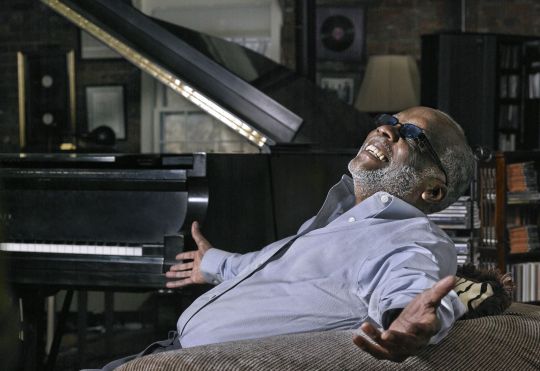
The dapper and sagacious Ahmad Jamal may have looked more like a UN delegate than a jazz musician, but he was recognised as a truly great jazz artist by some of the music’s most notable pioneers. Jamal, who has died aged 92, was hailed in the 1940s and 50s by Art Tatum and Miles Davis, and more recently by McCoy Tyner and Keith Jarrett. In the 90s, when a jazz piano-trio renaissance was being led by gifted newcomers such as Brad Mehldau, Jason Moran, Geri Allen and Esbjörn Svensson, Jamal did not retire to the sidelines but played better than ever. The former Wynton Marsalis pianist and composer Eric Reed has said that Jamal is to the piano trio “what Thomas Edison was to electricity”.
He was a fascinating philosopher of contemporary music and a lifelong critic of the entertainment business, which he accused of fleecing African-American artists. Although he recognised the structural and technical distinctions of jazz and European classical music, he was adamant that there was no superiority of one over the other in what he called “the emotional dimensions”. “You have to know what the hell you’re doing,” he told me in 1996, “whether you’re playing the body of work from Europe or the body of work from Louis Armstrong.”
Jamal was born Frederick Jones in Pittsburgh, Pennsylvania, and regarded the eclectic musical culture of his birthplace as crucial to his development. His father was an open-hearth worker in the steel mills, but his uncle Lawrence played the piano and at only three years old Jamal was copying his playing by ear. He took lessons from seven, and would recall “studying Mozart along with Art Tatum”, unaware of white society’s widespread prejudice that European music was supposed to be superior to that of African-Americans. Significant influences in his early years were the music teacher Mary Cardwell Dawson (founder of the National Negro Opera Company), and his aunt Louise, who showered him with sheet music for the popular songs of the day. Pianists Tatum, Nat King Cole and Erroll Garner were among the young “Fritz” Jones’s principal jazz influences, and he also studied piano with James Miller at Westinghouse high school.
At 17 he toured with the former Westinghouse student George Hudson’s Count Basie-influenced orchestra, worked in a song-and-dance team, and wrote one of his most enduring themes, Ahmad’s Blues, at 18. Two years later he adopted Islam, and the name Ahmad Jamal. He also joined a group called the Four Strings, which became the Three Strings with the departure of its violinist, and caught the ear of the talent-spotting producer John Hammond, who signed the trio to Columbia’s Okeh label.
The public liked Jamal’s distinctive treatments of popular songs, and so did Davis. Developing his new quintet in 1955, Davis sent his rhythm section to study Jamal’s then drummer-less group. Davis liked Jamal’s pacing and use of space (the prevailing bebop jazz style was usually hyperactive), and he noticed that Jamal’s guitarist, Ray Crawford, often tapped the body of his instrument on the fourth beat. Davis told his drummer, Philly Joe Jones, to copy the effect with a fourth-beat rimshot, which became a characteristic sound of that ultra-hip Davis ensemble. Davis began to feature Jamal’s originals and arrangements in his own output, including New Rhumba (on his 1957 Miles Ahead collaboration with Gil Evans), and Billy Boy (on 1958’s classic Milestones session).
The gifted young Chicago bassist Israel Crosby joined the trio in 1955, and the following year the percussionist Vernel Fournier – who fulfilled Jamal’s requirements for a subtle hand-drummer as well as orthodox sticks-player – replaced Crawford. The group became the house band at the Pershing Hotel in Chicago, and one night in January 1958 they recorded more than 40 tracks there. One was Poinciana, which had been a hit tune from the 1952 movie Dreamboat. Jamal modernised its Latin groove, maintained a catchy hook throughout the improvisation, and found himself with a pop hit that stayed in the charts for two years.
Eight songs from that night, including Poinciana, made up the million-selling album At the Pershing: But Not for Me. Jamal’s newfound wealth led him to branch out into club ownership by opening the Alhambra in Chicago, though the venture barely lasted a year. Crosby and Fournier left for the pianist George Shearing’s group in 1962, and Jamal recorded the Latin-influenced Macanudo album the next year, with a new trio and a full orchestra. He also explored his cultural and ancestral roots in Africa, then recorded Heat Wave in 1966 – with a new group (Jamil Nasser on bass and Frank Gant on drums) and a more contemporary feel, reflected in the funkier approach to his old piano hero Garner’s Misty.
Jamal’s knack of keeping audiences mesmerised with unexpected modulations, time changes and catchy riffs, while never losing the undercurrent of the tune, was still unmistakably intact. His trademark device of insinuating a song – through toying with its bassline or its characteristic groove, but endlessly delaying the appearance of the tune – was adopted by many later jazz pianists, including such contemporary masters as Mehldau.
In 1970 Jamal recorded Johnny Mandel’s M*A*S*H theme for the movie’s soundtrack, and with the albums Jamaica (in 1974, which included Marvin Gaye’s Trouble Man as well as M*A*S*H) and Intervals (1979, which included a Steely Dan cover), showed he was not averse to toying with pop forms and even electric pianos. But he soon returned to the jazz of his roots. In 1982 he made the live album American Classical Music (it was the term he always preferred to the word “jazz”), sustained a steady output through the decade, and with Chicago Revisited (1992) sounded as assured and inventive as ever.
Now in his 60s, Jamal began to develop a higher profile in Europe. Sessions for the Dreyfus label in France led to The Essence (issued in three parts in the 90s), and found him in full flight with the saxophonists George Coleman and Stanley Turrentine and the trumpeter Donald Byrd. In 1995 his version of Music, Music, Music and the original take of Poinciana were featured in the Clint Eastwood film The Bridges of Madison County. He made what he regarded as one of his best recordings with Live in Paris 1996 (featuring Coleman again), and returned to the city to celebrate his 70th birthday in 2000 with Coleman; he was in inspired form on what would be released as the album A l’Olympia (2001).
With the exciting James Cammack on bass and Idris Muhammad on drums, Jamal’s composing blossomed. Striking originals dominated his 2003 album In Search of Momentum, and he even made a faintly stagey but soulful foray into singing, amid a raft of virtuoso keyboard displays, on After Fajr (2005).
Jamal’s alertness to an irresistible riff, like his keyboard contemporary Herbie Hancock’s, made him a favourite with hip-hop artists, and De La Soul’s Stakes Is High and Nas’s The World Is Yours were among many unmistakable testaments to that. Mosaic Records’ nine-CD set of his game-changing work in the late 1950s and early 60s was released in 2011, his group made a spectacular live appearance in London in 2014, and his last album releases came in 2022 with Emerald City Nights: Live at the Penthouse, parts one and two, featuring live recordings made in Seattle during the 60s. A third in the series is due for release this year.
Jamal was married and divorced three times – to Virginia Wilkins, Sharifah Frazier and Laura Hess-Hay. He is survived by a daughter, Sumayah, from his second marriage, and two grandchildren.
🔔 Ahmad Jamal (Frederick Russell Jones), musician, born 2 July 1930; died 16 April 2023
Daily inspiration. Discover more photos at http://justforbooks.tumblr.com
31 notes
·
View notes
Text
Something in the Heir: Book Review
You know the drill! Here's all my thoughts, feelings, and ramblings on...
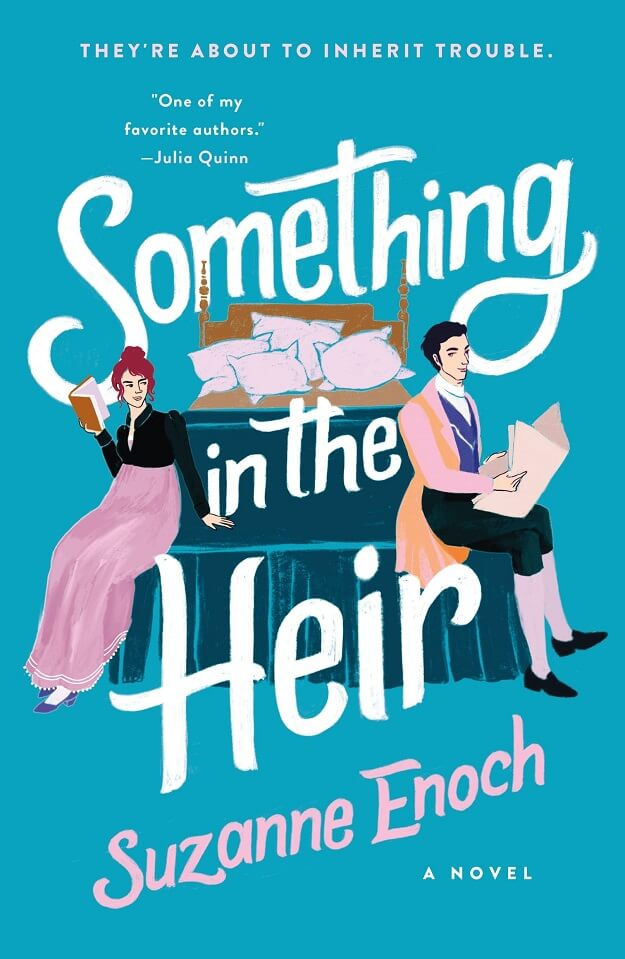
Emmeline and William Pershing have enjoyed a perfectly convenient marriage for eight years. Their relationship is a seamless blend of their talents and goals. They’ve settled into separate, well-ordered lives beneath the same roof, and are content to stay that way��or so Emmeline thinks. And if William has secretly longed for a bit more from the woman he adores, he’s managed to be content with her supreme skills as a hostess and planner, which has helped him advance his career. Then when Emmeline’s grandfather, the reclusive Duke of Welshire, summons them both for his birthday celebration and demands they bring their two little angelic children, William is stunned to discover that his very proper wife invented not one, but two heirs to fulfill the agreement for living at Winnover. But surely if Emmeline and William team up and borrow two cherubs to call their own, what could go wrong? Enter George, age 8, and Rose, 5—the two most unruly orphans in Britain. As the insanity unfolds, their careful, professional arrangement takes some surprisingly intimate turns as well. Perhaps it takes a bit of madness to create the perfect happily ever after.
_________________________________________________________
This novel was fairly unexpected, partly because the cover above was the one I was expecting when I pre-ordered the book, but this is what came in the mail:

I definitely didn't have a problem with this, but again, it wasn't what I was expecting.
Next on the agenda is that it's actually a bit difficult categorizing this as strictly a "romance novel". There's honestly very little romance in it, and this took on more of a Disney Channel Family Comedy sort of feel.
I wouldn't say that I hated this book, or even disliked it, but I just felt sort of...meh about it, I suppose. I love a good found family concept, but Enoch seemed to be juggling too many things in this one, so it was hard to get a good feel for any of the characters. The main couple get sections in the book with their POV's as is expected in a romance novel, but the children do as well, which I actually liked at first... then there is the servants (as well as a tiny secondary couple among them) that get their own little POV's sprinkled throughout as well.... so yeah, a lot of juggling there.
I honestly don't feel like I got to know a single character while reading this novel, and I certainly won't miss them now that it's over. Instead I'll probably forget all about them.
It's a shame, as this was my first Suzanne Enoch novel. I'll definitely give her another chance though, since I'm sure she has some great stories out there!
_____________________________________________________
Trigger Warnings: Mentions of Death, Child Endangerment,
Heat Level: 0/5
#book review#romance novel#something in the heir#suzanne enoch#regency era#book reviews#romance novels#romancelandia#romance community#historical romance#novel#fiction
9 notes
·
View notes
Text
Israel Crosby: The Bass Virtuoso Who Defined Jazz Rhythms
Introduction: In the vibrant tapestry of jazz, certain figures stand as pillars, shaping the very essence of the genre. Israel Crosby, a luminary born one hundred and five years ago today on January 19, 1919, in Chicago, Illinois, was one such figure. Renowned for his mastery of the double bass, Crosby’s influence resonates through the annals of jazz history. This exploration unfolds the life,…

View On WordPress
#Ahmad Jamal#Ahmad Jamal Trio#Albert Ammons#At the Pershing: But Not for Me#Benny Goodman#Chu Berry#Coleman Hawkins#Fletcher Henderson#Gene Krupa#George Shearing#George Shearing Quintet#Herb Ellis#Israel Crosby#Jazz Bassists#Jazz History#Listen to the Ahmad Jamal Quintet#Teddy Wilson#The Midnight Roll
2 notes
·
View notes
Text
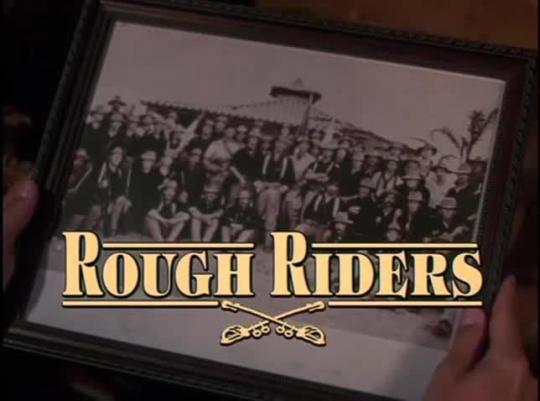

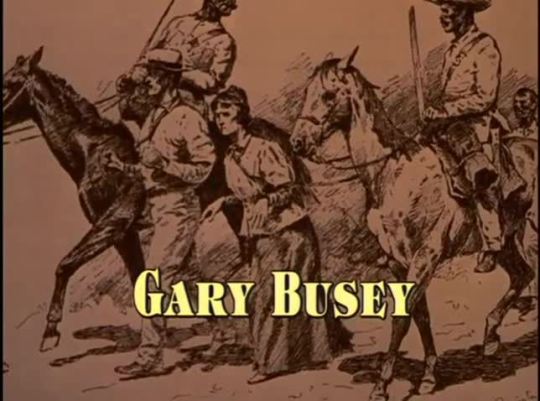
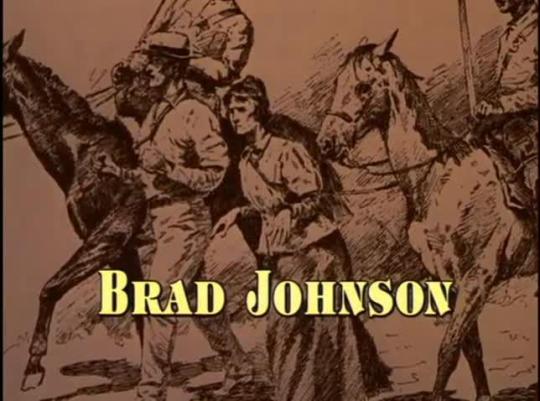


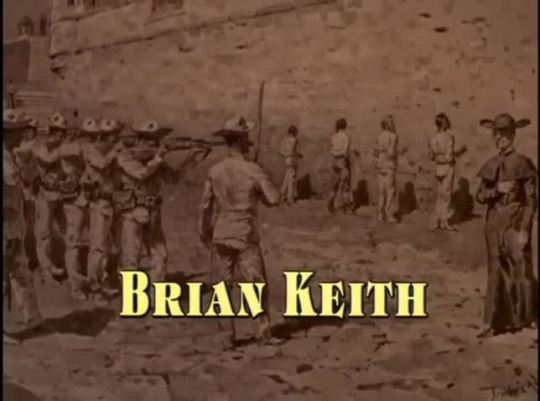

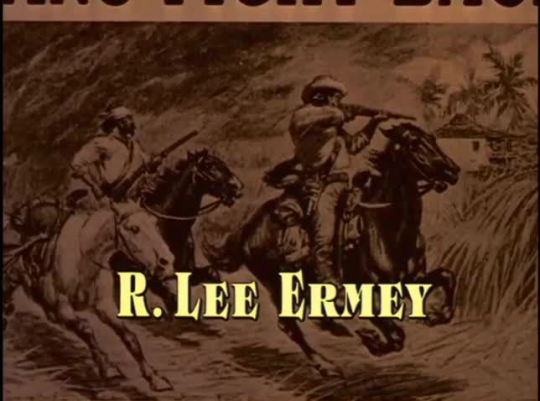

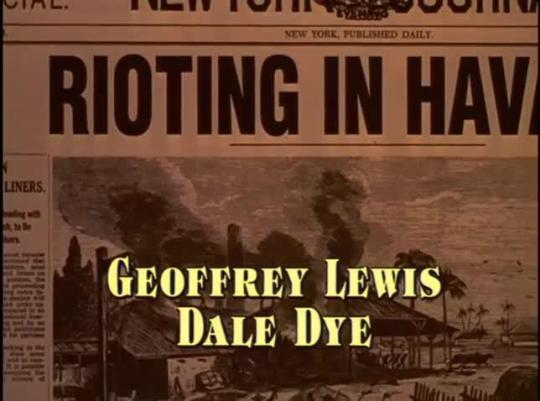
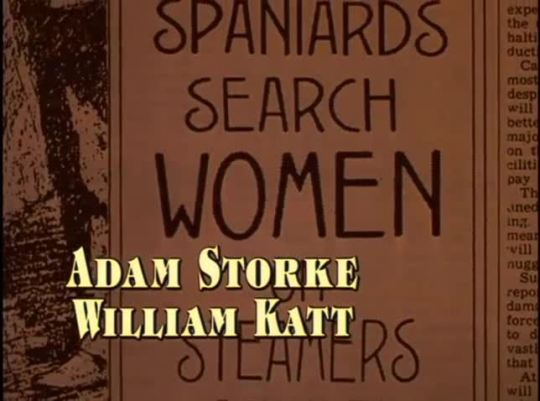





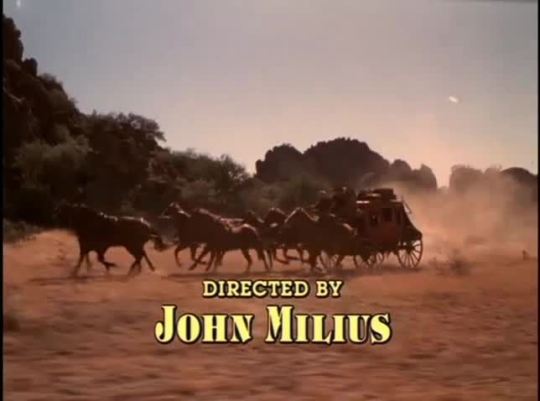
Rough Riders - TNT - July 20-21, 1997
War History (2 episodes)
Running Time: 184 minutes
Stars:
Tom Berenger as Lieutenant Colonel / Colonel Theodore Roosevelt
Sam Elliott as Captain William "Bucky" O'Neill
Gary Busey as Major General Joseph Wheeler
Brad Johnson as Henry Nash
Illeana Douglas as Edith Roosevelt
Chris Noth as Craig Wadsworth Jr.
Brian Keith as President William McKinley
George Hamilton as William Randolph Hearst
R. Lee Ermey as Secretary of State John Hay
Nick Chinlund as Frederic Remington
Dale Dye as Colonel / Brigadier General Leonard Wood
Holt McCallany as Sergeant Hamilton Fish
Geoffrey Lewis as Eli
James Parks as William Tiffany
Dakin Matthews as Craig Wadsworth Sr.
Mark Moses as Captain Woodbury Kane
William Katt as Edward Marshall
Francesco Quinn as Rafael Castillo
Adam Storke as Stephen Crane
Titus Welliver as B. F. Goodrich
Diana Jorge as Mademoiselle Adler
Eric Allan Kramer as Henry Bardshar
Angee Hughes as Sara Bardshar
Bob Primeaux as Bob "Indian Bob"
Pablo Espinosa as Major Frederick Funston
Michael Greyeyes as Delchaney
Buck Taylor as George Neville
Darin Heames as Lieutenant William Wheeler (based on Joseph M. Wheeler IV)
Marshall Teague as Lieutenant John Pershing
John S. Davies as General Henry Lawton (uncredited)
#Rough Riders#TV#War History#TNT#1997#1990's#Tom Berrenger#Sam Elliott#Gary Busey#Brad Johnson#Illeana Douglas#Chris Noth#Brian Keith
6 notes
·
View notes
Text
On to Round 2!
This is a wrap-up of the current standings. Polls for round 2 will be published starting this Saturday (12/16).
Congratulations to all the counties that progressed!
The state that is standing the strongest is New York, with 39 counties progressing to round 2! Albany, Allegany, Allegany, Broome, Cattaraugus, Chautauqua, Chemung, Chenango, Clinton, Columbia, Delaware, Franklin, Greene, Hamilton, Jefferson, Kings, Livingston, Nassau, New York, Niagara, Oneida, Orange, Otsego, Putnam, Rensselaer, Richmond, Rockland, Saint Lawrence, Saratoga, Schuyler, Steuben, Suffolk, Sullivan, Ulster, Warren, Washington, Wayne, Westchester, and Wyoming.
Next most powerful state is Virginia, which has 36 winning counties. Alleghany, Alleghany, Amherst, Augusta, Bedford, Brunswick, Caroline, Carroll, Charlotte, Chesterfield, Fairfax, Fauquier, Fluvanna, Gloucester, Goochland, Grayson, Halifax, Isle of Wight, James City, King and Queen, King George, King William, Lee, Louisa, Montgomery, Patrick, Pittsylvania, Prince Edward, Pulaski, Rockingham, Scott, Smyth, Southampton, Tazewell, Warren, and Wise.
Ohio is also standing strong with 27 advancing counties. Brown, Butler, Columbiana, Coshocton, Crawford, Defiance, Erie, Fulton, Geauga, Holmes, Jackson, Lake, Lawrence, Licking, Madison, Mahoning, Medina, Mercer, Monroe, Muskingum, Perry, Pickaway, Ross, Scioto, Seneca, Trumbull, and Van Wert.
North Carolina is up next with a solid 24 wins. Beaufort, Cabarrus, Caldwell, Camden, Carteret, Craven, Currituck, Granville, Harnett, Henderson, Hoke, Jackson, Johnson, Lenoir, Lincoln, Macon, Madison, Mecklenburg, Northampton, Onslow, Person, Robeson, Tyrrell, and Wake.
Only 1 more state has over 20 counties that made won their match-ups and that's my wonderful Washington. Adams, Asotin, Chelan, Clallam, Cowlitz, Ferry, Garfield, Grant, Grays Harbor, King, Kitsap, Kittitas, Klickitat, Lewis, Pacific, Pend Oreille, Skagit, Snohomish, Thurston, Walla Walla, Whatcom, Whitman, Yakima. Stay strong my soldiers.
A much higher number of states are comfortably in the middle of the pack. They are as follows:
Texas: 19 counties. Bosque, Collin, Dallas, Denton, Fort Bend, Goliad, Hockley, Jones, Lipscomb, Live Oak, Llano, McMullen, Milam, Ochiltree, Orange, Panola, Parker, San Patricio, and Travis.
California: 17 counties. Amador, Calaveras, El Dorado, Imperial, Lake, Mariposa, Monterey, Orange, San Benito, San Luis Obispo, Santa Barbara, Santa Clara, Santa Cruz, Solano, Tulare, Tuolumne, and Yolo.
Pennsylvania: 16 counties. Allegheny, Blair, Butler, Carbon, Dauphin, Franklin, Greene, Jefferson, Lancaster, Lycoming, Mifflin, Montgomery, Perry, Potter, Venango, and York.
Tennessee: 15 counties. Blount, Campbell, Carter, Cumberland, Hardin, Houston, Johnson, Knox, Madison, Maury, McNairy, Obion, Union, Williamson, and Wilson.
Nebraska: 13 counties. Adams, Buffalo, Cass, Cherry, Dakota, Keith, Knox, Nuckolls, Platte, Saunders, Stanton, Thayer, and Webster.
Nevada: 13 counties. Churchill, Clark, Douglas, Esmeralda, Eureka, Lander, Lincoln, Lyon, Mineral, Pershing, Storey, Washoe, and White Pine.
Illinois: 12 counties. Cook, DeKalb, Franklin, Jasper, Kane, Marion, McDonough, McHenry, Morgan, Peoria, St Clair, and Winnebago.
Maryland: 12 counties. Anne Arundel, Calvert, Carroll, Cecil, Dorchester, Frederick, Montgomery, Prince George’s, Queen Anne’s, Talbot, Washington, and Worcester.
Michigan: 12 counties. Barry, Berrien, Clinton, Genesee, Gogebic, Kalamazoo, Lake, Oceana, Ottawa, Rocommon, Sanilac, and Wexford.
Iowa: 11 counties. Dickinson, Fayette, Hancock, Hardin, Henry, Humboldt, Jefferson, Jones, Polk, Pottawattamie, and Wright.
Louisiana: 11 parishes. Ascension, Bossier, Cameron, Catahoula, Concordia, Jefferson, Lincoln, Natchitoches, St Bernard, St James, and St Tammany.
New Jersey: 11 counties. Bergen, Cumberland, Essex, Middlesex, Morris, Passaic, Salem, Somerset, Sussex, Union, and Warren.
Kentucky: 10 counties. Boone, Boyle, Breckinridge, Daviess, Leslie, Logan, Pike, Shelby, Trimble, Woodford.
Many of these poor cute states are barely hanging on. Please wish them luck.
Florida: 8 counties. Alachua, Bay, Miami-Dade, Monroe, Okaloosa, Osceola, Palm Beach, and St Johns.
New Mexico: 8 counties. Colfax, Curry, Doña Ana, Lincoln, Mora, Otero, Roosevelt, and Socorro.
Georgia: 6 counties. Bartow, Cherokee, Floyd, Fulton, Pierce, and Rockdale.
Indiana: 6 counties. Benton, Elkhart, Jennings, Marion, Marshall, and Starke.
Minnesota: 6 counties. Aitkin, Clearwater, Hennepin, Hubbard, McLeod, and Pipestone.
Wisconsin: 6 counties. Calumet, Fond du Lac, Osaukee, Portage, Racine, and Sheboygan.
Wyoming: 6 counties. Big Horn, Converse, Lincoln, Natrona, Park, and Teton.
Missouri: 5 counties. Clay, Gentry, Greene, Newton, and St Louis.
South Carolina: 5 counties. Anderson, Calhoun, Dillon, Dorchester, and Lexington.
Utah: 5 counties. Beaver, Summit, Utah, Washington, and Wayne.
Alaska: 4 boroughs. Anchorage, Juneau, Matanuska-Susitna, and Wrangell.
Arkansas: 4 counties. Cross, Searcy, Washington, and White.
Colorado: 4 counties. Douglas, El Paso, Fremont, and La Plata.
Oklahoma: 4 counties. Bryan, Payne, Rogers, and Washington.
West Virginia: 4 counties. Fayette, Marion, Monongalia, and Roane.
Alabama: 3 counties. Bullock, Cleburne, and Mobile.
Arizona: 3 counties. Coconino, Maricopa, and Yavapai.
Maine: 3 counties. Androscoggin, Hancock, and Washington.
Idaho: 2 counties. Bannock and Bonner.
Kansas: 2 counties. Atchinson and Johnson.
Massachusetts: 2 counties. Barnstable and Berkshire.
Montana: 2 counties. Gallatin and Silver Bow.
North Dakota: 2 counties. Benson and LaMoure.
Some states only have 1 county that progressed. They are: Delaware (Kent County), Hawaii (Maui County), Mississippi (Adams County), New Hampshire (Hillsborough County), Oregon (Linn County), and South Dakota (Bennet County).
```
In addition to all the winning counties above, there will be 83 new county flags folded into round 2!!! (Because of math reasoning this had to happen) Get hyped
They are as follows:
Alexander NC, Allen OH, Alpena MI, Alpena MI, Alpine CA, Arapahoe CO, Ashe NC, Avery NC, Baldwin AL, Baltimore MD, Bell KY, Benzie MI, Bernalillo NM, Black Hawk IA, Brevard FL, Camden NJ, Campbell WY, Canyon ID, Centre PA, Charles City VA, Cheatham TN, Chester PA, Clark WA, Clarke VA, Cleveland OK, Cochise AZ, Columbus NC, Coweta GA, Darke OH, Davidson NC, Elko NV, Erie PA, Florence SC, Garrett MD, Goshen WY, Greene VA, Grundy IL, Gwinnett GA, Hidalgo TX, Highland OH, Hocking OH, Holt NE, Hot Springs WY, Howard MD, Huntingdon PA, Ingham MI, Island WA, Kankakee IL, Lackawanna PA, Lawrence PA, Leelanau MI, Lehigh PA, Leon FL, Liberty TX, Lucas OH, Madera CA, Mahaska IA, Manitowoc WI, McLennan TX, Meigs OH, Milwaukee WI, Nashville and Davidson TN, Northumberland VA, Orleans NY, Page VA, Porter IN, Sacramento CA, Salt Lake UT, San Diego CA, Sangamon IL, Sevier TN, Shelby TN, Skamania WA, Spotsylvania VA, Stafford VA, Sussex VA, Terrell TX, Trinity CA, Tulsa OK, Tuscarawas OH, Ventura CA, Wahkiakum WA, Yuma AZ
5 notes
·
View notes
Text
INTRO TO PANDORA.
subject matter : the silent four / the network . the foundation of pandora in the years before its creation .
the foundation of pandora has only existed for two decades . the organization itself has existed since world war I ( 1917 ) . the birth of espionage [ pigeon messages , a can of maps … mata hari , a dancer with high ranking admirer’s – – was hired by french intelligence to spy on the germans . ] operation nightwatch was planned by the united states government , forming a group of three men and a woman [ they are known as : ‘ the silent four . ’ ] nightwatch came from the mind of john j. pershing ( a decorated general of the u.s army ) , under woodrow wilson’s presidency . a sort of modest thing before the united states entered into the game of espionage .
gabriel kane , born in new york city in 1890 and the son of irish immigrants . during the first world war , he was the member of the 77th division , which saw extensive action in the meuse - argonne offensive . kane’s unit was tasked with attacking german fortifications along the front lines , and he quickly distinguished himself as a fearless and high skilled combatant . he was wounded multiple times in battle but continued to lead his fellow soldiers with bravery and determination . gabriel’s talents did not go unnoticed by his superiors , and he was eventually handpicked to join a special operations unit tasked with carrying out covert missions behind enemy lines . he excelled in this role , using his knowledge of the terrain and his ability to blend in with the local population to carry out a variety of missions , including sabotage and aviation , he enlisted in the army and intelligence gathering . it was during one of these missions that general john j. perishing first took notice of kane . after overseeing a assignment in which kane was sent on a dangerous reconnaissance mission , perishing was impressed by kane’s bravery and resourcefulness and subsequently recruited him into the silent four .
anthony price , born in philadelphia in 1890 from humble beginnings . he was heavily interested in civil rights movements , since both his parents were people of color . he also wrote poetry , often getting his poetry and articles published ( he talks about a lot of topics that are very personal to him , and sometimes becomes scrutinized for it . ) when world war 1 came about , he set off to join the army - in particular the harlem hellfire company in the 369th infantry regiment , a mostly all black company that initially were regulated to minor labor duties . eventually he and his fellow company men were sent to the front lines to fight along side the french army . price was a skilled linguist and fluent in french and german , which proved usful and he became a valuable asset to his company . during the battle of belleau wood , the harlem hellfire company saw extensive action , being tasked with capturing a heavily defended german position . anthony showed exceptional bravery and leadership , leading several successful assaults on enemy positions and earning respect of his fellow soldiers . to use his linguistic abilities to gather valuable intelligence on enemy movements and positions . he was eventually recruited by george creel , one of the six men who founded tsf .
damien knight , born in wichita kansas in 1891 , his parents owned a small airplane manufacturing business . because he grew up around airplanes and aviation , he enlisted in the army and underwent flight training , quickly proving himself a skilled and fearless pilot . one of his missions took place during the battle of saint - mihiel . knight was tasked with leading a squadron of planes on a bombing run against a key german supply depot . despite heavy anti - aircraft fire and enemy airplanes , knight and his squadron successfully carried out the mission , dealing a significant blow to german forces for the war effort . he was soon to be recruited by another member of tsf , who recognized his bravery , tactical skills , and the ability to think on his feet . he became an important member of the group , using her aviation expertise to carry out covert missions . his piloting skills were especially valuable in situations where the group needed a quick extraction or others in dangerous situations .
elizeabeth stone , elizabeth was boring in boston massachusetts in 1893 to a wealthy family of philanthropists . during the worked as a nurse , working on the front lines to care for wounded soldiers . she was stationed in several locations throughout europe , including france and italy , and gained a she developed a network of contacts among soldiers and civilians , and used her knowledge to help the allies plan reputation as one of the most dedicated and skilled nurses in her unit . she often went above and beyond her duties to provide comfort and care to soldiers , even under dan gerous condition or help was known to venture out into “ no man’s land ” to retrieve injured soldiers who were stranded or under fire , risking her own safety to ensure they were received medical attention . during her service , she also developed an interest in intelligence gathering , and began to secretly collect information about enemy troop movements and other military intelligence . she developed a network of contacts among soldiers and civilians , and used her knowledge to help the allies plan strategic operations . stone showed bravery and her intelligence gathering skills caught the attention of one of the founders of tsf , who then recruited her to work as a covert agent . as a member of the group , she used her medical knowledge and intelligence - gathering skills to carry out a range of missions , often going undercover as a nurse or aid worker to gather information or help resistance groups .
TIMELINE OF EVENTS ,
1918 - 1920 :
the silent few ( tsf ) extends to include more agents after the first world war ends . focusing on recruiting veterans of the war , giving them promise and purpose ( especially if they’ve felt lost and disconnected after the war . )
the organization becomes more structured , with specialized teams for intelligence gathering , field operations , and research and development etc .
it establishes its headquarters in washington d.c , and has offices across the united states and the world as a safe place for agents to go to while on a mission .
1921 - 1939 :
tsf continues to grow and adapt , now going by a different name , called the network . it continued to develop new technologies and tactics for espionage and covert operations .
the organization's reputation for effectiveness and discretion attracts the attention of influential government officials and wealthy benefactors .
agents are involved in a number of high - profile missions , including efforts to counter soviet espionage and sabotage during the interwar period .
1940 - 1945 :
with the outbreak of world war 2 , the silent few plays a critical role in gathering intelligence and conducting sabotage and espionage operations against the axis powers .
many agents served in the armed forces , using their specialized training to aid in military operations . while others fought alongside the military as a show of support .
during this time , the network continues to recruit and train new operatives , expanding its tanks to include specialists in a wide range of fields ( including cryptography , linguistics , and technology . )
1946 - 1960 :
in the aftermath of the war , the network shifted its focus to countering the emerging threat of communist regimes around the world .
the organization engages in covert operations to support anti - communist forces in countries such as korea , vietnam and cuba .
the network develops new technologies and techniques for surveillance and intelligence gathering , including the use of satellites and advanced encryption methods .
1961 - 1989 :
during the cold war , the organization plays a key role in working to gather intelligence and thwart soviet espionage efforts .
it becomes increasingly secretive and compartmentalized , with many agents operation in isolation from one another .
during this time , the agency develops advanced weapons and technologies for use in covert operations .
1990 - 1995 :
with the collapse of the soviet union and the end of the cold war , the network finds itself facing a new era of uncertainty and shifting geopolitical priorities .
the organization struggles to adapt to new threats such as terrorism and cyber warfare , and begins to face criticism for its secrecy and lack of accountability .
during a period of weakness , a man named conrad ashe would assassinate top network individuals and any agents who were loyal , take over the organization . effectively wiping it clean and starting over . thus pandora was born , in a new world with new possibilities .
#* out of chara .#* world building ‚ pandora .#okay so this is the first of many... and i mean many posts that i'll be making#also they're going to be vERY long as well so...#yeah...#hope you enjoy reading it tho!
6 notes
·
View notes
Note
that ask about the soldiers fighting hours after the danish surrender reminded me of ww1
the armistice was signed at 5:45 am, it only went into effect at 11 am
here is a segment from wikipedia
"Many artillery units continued to fire on German targets to avoid having to haul away their spare ammunition. The Allies also wished to ensure that, should fighting restart, they would be in the most favourable position. Consequently, there were 10,944 casualties, of whom 2,738 men died, on the last day of the war.
An example of the determination of the Allies to maintain pressure until the last minute, but also to adhere strictly to the Armistice terms, was Battery 4 of the US Navy's long-range 14-inch railway guns firing its last shot at 10:57:30 a.m. from the Verdun area, timed to land far behind the German front line just before the scheduled Armistice.
Augustin Trébuchon was the last Frenchman to die when he was shot on his way to tell fellow soldiers, who were attempting an assault across the Meuse river, that hot soup would be served after the ceasefire. He was killed at 10:45 a.m.
Marcel Toussaint Terfve was the last Belgian soldier to die as he was mortally wounded from German machine gun fire and died from his lung wound at 10:45 a.m.
Earlier, the last British soldier to die, George Edwin Ellison of the 5th Royal Irish Lancers, was killed that morning at around 9:30 a.m. while scouting on the outskirts of Mons, Belgium.
The final Canadian, and Commonwealth, soldier to die, Private George Lawrence Price, was shot and killed by a sniper while part of a force advancing into the Belgian town of Ville-sur-Haine just two minutes before the armistice to the north of Mons at 10:58 a.m.
Henry Gunther, an American, is generally recognized as the last soldier killed in action in World War I. He was killed 60 seconds before the armistice came into force while charging astonished German troops who were aware the Armistice was nearly upon them. He had been despondent over his recent reduction in rank and was apparently trying to redeem his reputation.
News of the armistice only reached Germany's African forces, still fighting in Northern Rhodesia (today's Zambia), about two weeks later. The German and British commanders then had to agree on the protocols for their own armistice ceremony.
After the war, there was a deep shame that so many soldiers died on the final day of the war, especially in the hours after the treaty had been signed but had not yet taken effect. In the United States, Congress opened an investigation to find out why and if blame should be placed on the leaders of the American Expeditionary Forces, including John Pershing. In France, many graves of French soldiers who died on 11 November were backdated to 10 November"
that was interesting to read, because i don't know much about both ww1 at large (curse of being always overshadowed by the second) and... the question of how does it end at all is always present when it comes to things like this. it's all so terrifying and despairing
#Spot says stuff#// war //#not the frenchman with the hot soup dear god. ugh. ugh..... fuck. that one hit the worst i think#thats such a simple normal and sweet goal. 'hey boys! hot soup is gonna be served after all of this! whos excited!' yet before that? dead.
5 notes
·
View notes